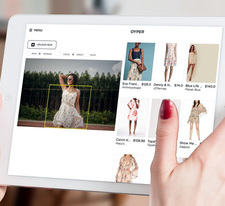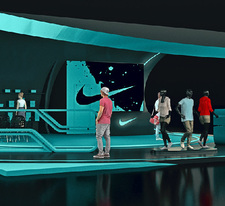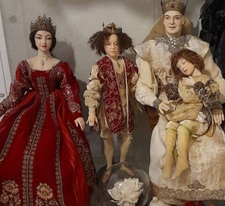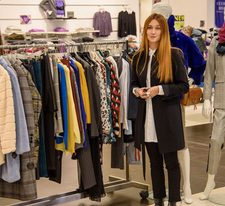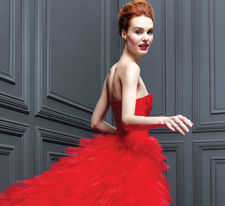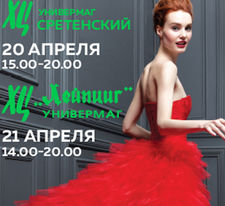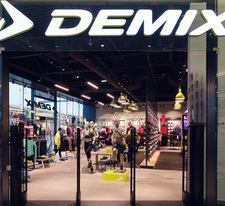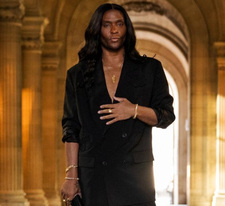Your stylist is a neural network
part 1 part 2 part 3
Everyone is familiar with the situation when it is necessary to urgently purchase an outfit for an event or pick up additions to the things already available in the wardrobe. It takes an excruciatingly long time to go shopping or scroll through dozens of catalogs of online retailers. A group of young talented Belarusian developers has created a virtual stylist who can solve all the problems with a new wardrobe. We continue the conversation with the co-founder of the projectKirill Sidorchuk and technology developer Vladislav Kaminsky about their innovative product Oyper.
Please tell us how your technology works.
V.K. Our technology is a neural network. Everything happens as follows: we pass the seller's catalog through the neural network, it distributes each item into categories (for example, jackets), as well as a whole mass of attributes, color, material, style, etc. After all these criteria are processed, the retailer is given access to all and it can show the user the results. That is, we provide documentation describing how all this can be applied on the client side. For example, a user clicks on some thing, we provide him with a selection of things very similar to it. He is offered documentation on what kind of request needs to be made, what parameters to dial in order to get a similar thing or pick up suitable ones from the retailer's catalogs. In fact, we provide a separate server for each client and documentation on what can be done with this server. At the same time, we provide the software part, and the technical part is the task of cloud servers.

The client can choose any of our five solutions or offer his own. We provide the following solutions:
1) search by picture or photo;
2) selection of similar items in the absence of the selected product in stock (at the same time we have the most accurate results of all solutions available today);
3) instant receipt of detailed, detailed information about the product by the photo of the item, which today is quite an acute problem for aggregators, to whom different retailers provide an unspecified description of each product, which is why it is necessary to adjust this information manually; 4) selection of other wardrobe items suitable in style, color, size, etc. for each item chosen by the buyer. It is also possible to upload photos of things from your closet to your personal account, after which a set of items suitable for them in style will be offered, which can be ordered on the website; 5) creation of ready-made images personalized for each client. This is the most difficult feature that we are constantly working on. The client needs to choose an occasion for which a ready-made image is needed, and set a price range. The neural network begins to generate stylish images from the things available in the retailer's catalog, which are very likely to please the client.
K.S. All our solutions are based on many years of research conducted in the Western market and concerning how artificial intelligence and similar solutions affect sales growth, the size of the average check, and the life cycle of the buyer. And all these studies unequivocally state that the use of artificial intelligence-based technologies on the site ensures an increase in conversion to 12%. Separate studies were conducted on the problem of the lack of goods in stock, when a person finds a thing, wants to buy it, but it is not available. More than 25% of buyers will leave the site and throw their baskets with other purchases if they encounter the problem of the lack of a product they like in stock. In addition, in more than 60% of cases, this situation will lead to the fact that the buyer will choose another brand or online store for subsequent purchases. The presence of the functionality «Similar products», when all similar items are offered to the selected item, increases the conversion on the page by 100%, compared to the page where there is no such service. The size of the average receipt with this functionality increases by 14%. These are all live statistics, and there are a lot of studies on these topics. As for photographing the thing you like and searching for products similar to it, research was conducted here for the company Amazon, which led to the conclusion that 66% of purchases in the field of fashion e-commerce are impulsive and this tool it should become the main one for making such impulsive purchases.

– That is, similar solutions already exist in the West?
K.S. Currently, many big players in the fashion e-commerce market around the world are implementing visual search engines. But there are issues of the conditions on which they are provided, and questions of accuracy. Accuracy is a clear definition of categories when it is recognized, for example, that trousers are trousers, not sweatpants. Everyone has their own accuracy. Some time ago, we decided to create a solution that would allow us to overtake competitors. We conducted research on our customers and realized that people are too lazy to take photos and upload them to the cabinet, they want them to appear there immediately. Therefore, we have created an application called Camera API, with elements of augmented reality, which allows you to simply point the phone camera at a thing or a person in clothes, after which the thing is immediately recognized and offered for purchase on the site to which this functionality is linked. This solution can be implemented in the mobile applications of our customers, I mean large stores. That is, we supply this technology for mobile applications, and there are no analogues of this solution in the world today. There are solutions Google, Huawei, Samsung that allow you to point your phone's camera at any product, be it a table or a chair, and these products are offered to buy on Amazon or Walmart. We are the first to develop solutions that will be integrated into retailers' applications.
– It seems to me that the process of product recognition is often hampered by the quality of photos that exist in online stores. Not everyone has solved the problem of adequate visual representation of the product.
V.K. Yes, we are facing this problem. The accuracy of the neural network decreases with complex backgrounds, but all the solutions we are talking about are based on one platform, one model, one technology. And when we achieve some improvement in our tests, it immediately applies to all five cases that we described above. That is, everything simultaneously moves to a new stage and becomes qualitatively better.
Natalia Kulagina interviewed
To be continued
Photo: provided by the developers



